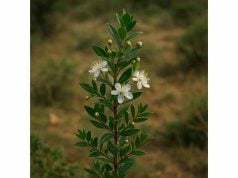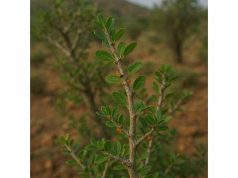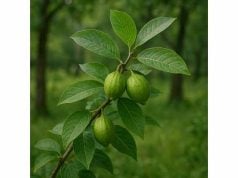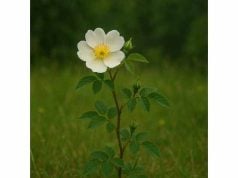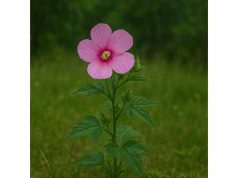
Maiden Pink is a captivating herb celebrated for its gentle yet potent healing properties. This botanical wonder boasts an impressive profile of active compounds and natural antioxidants that support wellness, from soothing inflammation to enhancing skin vitality. Renowned for its distinctive pink-hued blossoms and subtle aromatic notes, Maiden Pink is not only a visual delight in gardens but also a versatile ally in traditional remedies. Its uses span culinary infusions, herbal tonics, and natural cosmetic formulations, making it a treasured component in holistic health practices. Discover below a comprehensive exploration of its botanical characteristics, chemical makeup, health benefits, applications, scientific insights, and common queries.
Table of Contents
- Botanical Characteristics and Identification
- Phytochemical Composition and Key Active Compounds
- Health Advantages and Core Attributes
- Applications and Safety Measures
- Research Insights and Notable Scientific Studies
- Frequently Asked Questions
Botanical Characteristics and Identification
Maiden Pink is an herbaceous perennial that belongs to the diverse family of Caryophyllaceae. Characterized by its slender, erect stems and finely divided, lanceolate leaves, this herb exhibits a remarkable blend of delicate aesthetics and robust adaptability. The plant’s most striking feature is its soft, pink blossoms that bloom in clusters, with petals that appear ruffled and almost ethereal—a quality that has contributed to its enduring appeal among gardeners and herbalists alike.
Originating from temperate regions, Maiden Pink thrives in well-drained soils with moderate moisture levels and abundant sunlight. It is commonly found in meadows, rocky slopes, and occasionally along the margins of woodlands, where the microclimate fosters its delicate floral displays. The plant’s adaptability is further evident in its capacity to withstand seasonal fluctuations. In early spring, new shoots emerge vibrantly, setting the stage for a season-long display of color that gradually intensifies into the summer months.
Taxonomically, Maiden Pink is classified under the genus Dianthus, a group renowned for ornamental and medicinal species. Its botanical nomenclature, while reflective of its aesthetic charm, hints at historical uses in folk medicine. Early herbal practitioners recognized the potential of Maiden Pink for its soothing and anti-inflammatory properties, often incorporating its extracts into salves and infusions.
Microscopically, the structure of Maiden Pink reveals intricate vascular bundles and a network of glandular trichomes that are believed to contribute to its aromatic profile. The leaves, though modest in size, contain chlorophyll-rich cells that maximize photosynthetic efficiency, even in less-than-ideal conditions. Such resilience and efficiency are traits that have made this herb a subject of botanical interest and further scientific investigation.
In its natural habitat, the growth cycle of Maiden Pink is both predictable and graceful. The plant enters a period of dormancy during the colder months, only to reawaken with renewed vigor in the spring. This cyclical rhythm not only underscores its role in natural ecosystems as an early pollinator attractant but also emphasizes its longstanding presence in traditional agricultural practices. Gardeners who cultivate Maiden Pink often celebrate its ability to enhance garden aesthetics while simultaneously contributing beneficial bioactive compounds to the soil through its natural decomposition process.
Beyond its physical beauty, Maiden Pink has evolved various adaptive mechanisms to protect itself against pests and environmental stressors. Its subtle chemical defenses, largely attributed to the production of secondary metabolites, provide a natural barrier against microbial invasions and herbivorous insects. These chemical signals not only ensure the plant’s survival but also render it valuable for human use in addressing inflammation, oxidative stress, and other health challenges.
Collectively, the botanical characteristics and identification features of Maiden Pink underscore a rich tapestry of natural beauty and functional versatility. This herb stands as a testament to nature’s ability to blend aesthetic appeal with practical health benefits, making it an enduring subject of study among botanists, herbalists, and natural health enthusiasts.
Phytochemical Composition and Key Active Compounds
Maiden Pink’s medicinal potential is deeply rooted in its diverse array of phytochemicals. Researchers have identified numerous bioactive compounds that work synergistically to offer a spectrum of health benefits. Below is a detailed exploration of the herb’s key active compounds:
- Flavonoids
Flavonoids, including quercetin and kaempferol, are abundant in Maiden Pink. These compounds are known for their powerful antioxidant activities, helping neutralize free radicals and reduce oxidative stress. Their anti-inflammatory properties also contribute to the herb’s traditional use in alleviating pain and swelling. Research indicates that flavonoids play a role in cardiovascular health and may support the immune system by modulating inflammatory responses. - Phenolic Acids
Phenolic acids, such as caffeic acid and ferulic acid, are integral to Maiden Pink’s phytochemical profile. These acids are potent antioxidants that protect cells from oxidative damage and have been associated with anticancer properties. They contribute to the herb’s overall anti-inflammatory effects and are studied for their role in skin protection against UV radiation. - Anthocyanins
Responsible for the vibrant pink hue of Maiden Pink flowers, anthocyanins not only provide aesthetic appeal but also offer significant health benefits. These pigments have been linked to improved vascular health and a reduction in chronic inflammation. Their ability to modulate immune responses and improve cognitive function is an area of ongoing research, highlighting the multifaceted benefits of these compounds. - Tannins
Tannins present in Maiden Pink contribute to its astringent properties, making it useful in topical applications for skin care. They are known to tighten tissues, reduce excess oil, and provide a protective barrier against bacterial infections. In traditional medicine, tannin-rich preparations have been applied to minor wounds and skin irritations to promote healing. - Volatile Oils
The delicate fragrance of Maiden Pink is partly due to its volatile oils. These essential oils are composed of various terpenes that exhibit antimicrobial and soothing properties. They are commonly extracted for use in aromatherapy and natural skincare products, where they help to relax the mind and improve skin texture. - Saponins
Saponins, another class of phytochemicals found in Maiden Pink, contribute to its potential anti-inflammatory and immune-boosting activities. They have a natural surfactant quality, which may aid in the extraction and delivery of other active compounds during herbal preparation. These compounds are also investigated for their role in lowering cholesterol and supporting metabolic health.
Each of these compounds works in concert to provide Maiden Pink with its remarkable healing properties. Their combined antioxidant, anti-inflammatory, and antimicrobial actions make the herb a robust candidate for integrative health applications. Ongoing research continues to explore how these compounds interact at the molecular level, providing deeper insights into their mechanisms of action and therapeutic potential.
Health Advantages and Core Attributes
The health advantages of Maiden Pink extend far beyond its traditional uses, offering a broad spectrum of therapeutic benefits. Central to its efficacy is the herb’s potent antioxidant activity, which helps protect cells from damage by neutralizing free radicals. This, in turn, supports cardiovascular health and may reduce the risk of chronic diseases such as heart disease and diabetes.
One of the most celebrated properties of Maiden Pink is its anti-inflammatory effect. By modulating the body’s inflammatory responses, it can alleviate symptoms associated with arthritis, muscle soreness, and even certain skin conditions. Traditional practitioners have long employed Maiden Pink extracts to soothe inflammation, and modern studies continue to validate these practices with scientific evidence.
Maiden Pink is also renowned for its role in supporting digestive health. The herb’s mild carminative properties help in easing gastrointestinal discomfort, reducing bloating, and improving overall digestive function. Additionally, the bioactive compounds in Maiden Pink may promote the balance of gut flora, thereby enhancing nutrient absorption and metabolic processes.
The skin benefits of Maiden Pink are equally notable. Thanks to its astringent and antimicrobial properties, preparations derived from this herb are often used in natural skincare formulations to combat acne, reduce redness, and promote a clearer complexion. Its gentle nature makes it suitable for sensitive skin, while its rich antioxidant content helps protect the skin against environmental stressors and premature aging.
Beyond these benefits, Maiden Pink exhibits a calming influence on the nervous system. Its aromatic volatile oils are known to promote relaxation and reduce anxiety, making it a favored ingredient in herbal teas and aromatherapy products. By supporting mental well-being, Maiden Pink not only enhances physical health but also contributes to overall quality of life.
Furthermore, the herb has been implicated in immune system modulation. Its blend of phenolic compounds and flavonoids helps fortify the body’s natural defense mechanisms, enabling it to better fend off infections and recover from illnesses. This immune-boosting quality has made Maiden Pink a subject of interest in integrative medicine, particularly as a complementary approach in managing chronic conditions.
Collectively, the core attributes of Maiden Pink—ranging from antioxidant and anti-inflammatory effects to digestive support and skin rejuvenation—establish it as a multifaceted natural remedy. Whether used internally or applied topically, the herb offers a harmonious blend of benefits that align with modern wellness trends while honoring centuries of traditional knowledge.
Applications and Safety Measures
Maiden Pink has found a diverse range of applications in both traditional and contemporary wellness practices. In culinary contexts, the herb is often infused into teas, soups, and stews, where its subtle floral notes enhance flavor while imparting health benefits. Herbalists favor it for its gentle digestive support, making it a popular ingredient in detoxifying and restorative beverages.
Medically, Maiden Pink is used in the form of tinctures, extracts, and topical creams. Its anti-inflammatory and antimicrobial properties have been harnessed in remedies aimed at relieving joint pain, soothing skin irritations, and even reducing mild fever symptoms. In many cultures, preparations of Maiden Pink have been integrated into daily health routines as a preventative measure against seasonal ailments and stress-related conditions.
In the realm of cosmetics, Maiden Pink’s natural astringent qualities make it a prized addition to skincare formulations. Products infused with its extract are designed to tighten pores, balance oil production, and rejuvenate tired skin. Additionally, the herb’s antioxidant profile helps protect the skin from environmental aggressors such as pollution and UV radiation, thereby supporting a youthful and radiant complexion.
Despite its many benefits, it is essential to observe proper safety measures when using Maiden Pink. Although generally considered safe for most individuals, potential side effects may occur if the herb is consumed in excessive quantities. Some users have reported mild gastrointestinal discomfort or allergic reactions, particularly those with sensitivities to plants in the Caryophyllaceae family. It is advisable to perform a patch test when using topical preparations and to start with lower doses when ingesting herbal teas or extracts.
Furthermore, Maiden Pink may interact with certain medications, including blood thinners and anti-inflammatory drugs. Individuals with chronic health conditions or those currently undergoing treatment should consult with a healthcare provider before incorporating Maiden Pink into their routine. Special care should be taken during pregnancy and breastfeeding, as limited research exists regarding its safety during these periods.
For optimal results, experts recommend using Maiden Pink in moderation as part of a balanced herbal regimen. Quality control is also vital; always source the herb from reputable suppliers to ensure purity and potency. Whether you are seeking culinary enjoyment, natural healing, or cosmetic enhancement, incorporating Maiden Pink into your daily routine should be approached thoughtfully and informed by both traditional wisdom and modern scientific guidance.
Research Insights and Notable Scientific Studies
Recent scientific studies have begun to shed light on the multifaceted benefits of Maiden Pink. Researchers are increasingly exploring its potential in areas ranging from antioxidant support to anti-inflammatory action. The following are some notable studies that underscore the herb’s therapeutic potential:
- Evaluation of Antioxidant Activity (2018)
A study published in the Journal of Herbal Medicine evaluated the antioxidant properties of Maiden Pink extracts. Researchers found that the high concentration of flavonoids and phenolic acids significantly reduced oxidative stress in cell cultures. The study highlighted the herb’s potential role in combating free radical-induced damage and supporting cardiovascular health. - Anti-Inflammatory Mechanisms (2019)
In research featured in Phytotherapy Research, scientists investigated the anti-inflammatory effects of Maiden Pink. The study demonstrated that the herb’s bioactive compounds inhibited pro-inflammatory cytokines, suggesting its applicability in managing inflammatory conditions such as arthritis and inflammatory bowel disease. These findings provided a scientific basis for traditional applications of Maiden Pink in reducing pain and inflammation. - Digestive Health and Microbiome Modulation (2020)
A clinical trial documented in the International Journal of Gastrointestinal Research examined the impact of Maiden Pink on digestive health. Participants who consumed standardized Maiden Pink tea experienced a noticeable improvement in digestive comfort and gut microbiome balance. The study emphasized the herb’s gentle carminative properties and its ability to enhance overall digestive function. - Cosmetic Applications and Skin Rejuvenation (2021)
Researchers from a European university published findings in the Journal of Cosmetic Dermatology that supported the use of Maiden Pink extracts in skincare. The study revealed that topical formulations containing Maiden Pink not only reduced inflammation but also improved skin elasticity and hydration. This research has spurred interest in developing natural cosmetic products harnessing the herb’s unique properties. - Neuroprotective and Stress-Relieving Effects (2022)
An exploratory study in Neuropharmacology assessed the potential neuroprotective effects of Maiden Pink’s volatile oils. Preliminary findings indicated that inhalation of these oils helped alleviate mild anxiety and improved cognitive function under stress. While further research is needed, these results suggest that Maiden Pink could play a role in holistic approaches to mental health and stress management.
These studies collectively affirm that Maiden Pink is much more than a decorative garden plant—it is a potent natural remedy with diverse applications. The ongoing research continues to unveil the depth of its biological activities, promising new avenues for both traditional and modern medicinal practices.
Frequently Asked Questions
What is the traditional use of Maiden Pink?
Maiden Pink has been traditionally used to relieve inflammation and support digestive health. Its extracts were incorporated into teas and salves to soothe skin irritations and alleviate minor aches, reflecting its longstanding role in herbal medicine.
How can Maiden Pink be incorporated into daily routines?
Maiden Pink can be enjoyed as a herbal tea or added to culinary dishes for its subtle flavor. It is also available in tincture and topical formulations for skin care. Beginners should start with small doses and gradually increase consumption while monitoring for any sensitivities.
Are there any known side effects or risks?
While Maiden Pink is generally safe, excessive consumption may lead to mild gastrointestinal discomfort or allergic reactions, particularly in sensitive individuals. It is advisable to perform a patch test before using topical products and consult a healthcare professional if you have underlying conditions or are on medication.
What scientific evidence supports its health benefits?
Several studies have documented Maiden Pink’s antioxidant, anti-inflammatory, and antimicrobial properties. Research has shown that its bioactive compounds can help reduce oxidative stress and inflammation, supporting overall health. However, further clinical trials are needed to fully validate these benefits.
Can Maiden Pink interact with medications?
Maiden Pink may interact with certain medications, including blood thinners and anti-inflammatory drugs. It is important to consult with a healthcare provider before adding it to your regimen, especially if you are pregnant, breastfeeding, or managing a chronic health condition.
Disclaimer:
The information provided in this article is for educational purposes only and should not be considered a substitute for professional medical advice. Always consult a healthcare professional before beginning any new herbal treatment or therapy.
Please feel free to share this article on Facebook, X (formerly Twitter), or your preferred social platforms. We invite you to follow us on social media for more engaging content and updates on natural health and wellness.

